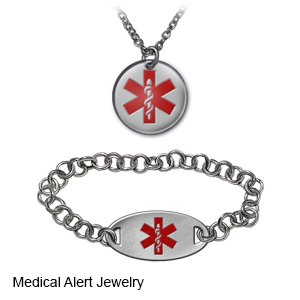Antibiotic Medication Allergy
Medically reviewed by Drugs.com. Last updated on Aug 4, 2025.
An antibiotic medication allergy is a harmful reaction to an antibiotic. The reaction can start soon after you take the medicine, or days or weeks after you stop. Healthcare providers cannot know ahead of time if you will have an allergic reaction. Your immune system may become sensitive to the antibiotic the first time you take it. You may have an allergic reaction the next time. The antibiotics most likely to cause an allergic reaction are penicillins and cephalosporins.
DISCHARGE INSTRUCTIONS:
Call 911 for signs or symptoms of anaphylaxis,
such as trouble breathing, swelling in your mouth or throat, or wheezing. You may also have itching, a rash, hives, or feel like you are going to faint.
Return to the emergency department if:
- You have a rash with itchy, swollen, red spots.
- You have blisters, or your skin is peeling.
- You have trouble swallowing or your voice sounds hoarse.
- You have a fast or pounding heartbeat.
- Your skin or the whites of your eyes turn yellow.
Contact your healthcare provider if:
- You think you are having an allergic reaction. Contact your provider before you take another dose of your antibiotic.
- You have a rash.
- You have a fever.
- You have a sore throat or swollen glands. You will feel hard lumps when you touch your throat if your glands are swollen.
- Your skin itches and becomes red when you are in the sunlight.
- You have questions or concerns about your condition, allergy, or care.
Medicines:
- Epinephrine is used to treat severe allergic reactions such as anaphylaxis.
- Antihistamines decrease mild symptoms such as itching or a rash.
- Steroids reduce inflammation.
- Take your medicine as directed. Contact your healthcare provider if you think your medicine is not helping or if you have side effects. Tell your provider if you are allergic to any medicine. Keep a list of the medicines, vitamins, and herbs you take. Include the amounts, and when and why you take them. Bring the list or the pill bottles to follow-up visits. Carry your medicine list with you in case of an emergency.
Follow up with your healthcare provider as directed:
Ask if you need to avoid other medicines you may be allergic to. Write down your questions so you remember to ask them during your visits.
Steps to take for signs or symptoms of anaphylaxis:
- Immediately give 1 shot of epinephrine only into the outer thigh muscle.
- Leave the shot in place as directed. Your provider may recommend you leave it in place for up to 10 seconds before you remove it. This helps make sure all of the epinephrine is delivered.
- Call 911 and go to the emergency department, even if the shot improved symptoms. Do not drive yourself. Bring the used epinephrine shot with you.
Safety precautions to take if you are at risk for anaphylaxis:
- Keep 2 shots of epinephrine with you at all times. You may need a second shot, because epinephrine only works for about 20 minutes and symptoms may return. Your provider can show you and family members how to give the shot. Check the expiration date every month and replace it before it expires.
- Create an action plan. Your provider can help you create a written plan that explains the allergy and an emergency plan to treat a reaction. The plan explains when to give a second epinephrine shot if symptoms return or do not improve after the first. Give copies of the action plan and emergency instructions to family members, work and school staff, and daycare providers. Show them how to give a shot of epinephrine.
- Be careful when you exercise. If you have had exercise-induced anaphylaxis, do not exercise right after you eat. Stop exercising right away if you start to develop any signs or symptoms of anaphylaxis. You may first feel tired, warm, or have itchy skin. Hives, swelling, and severe breathing problems may develop if you continue to exercise.
- Carry medical alert identification. Wear medical alert jewelry or carry a card that says you have an antibiotic medicine allergy. Healthcare providers need to know that they should not give you this antibiotic. Ask your provider where to get these items.

- Read medicine labels before you use any medicine. Do not take the medicine if it contains the antibiotic that you are allergic to. This includes topical medicines that you put on your skin. Ask a pharmacist if you are not sure.
- Tell all healthcare providers about your allergy. Always tell your providers the names of medicines that you are allergic to and the symptoms of your allergic reactions.
- Ask if you need to avoid other medicines. You may be allergic to other medicines if you had an allergic reaction to an antibiotic. Make sure you know the names of other medicines that you should not take.
© Copyright Merative 2025 Information is for End User's use only and may not be sold, redistributed or otherwise used for commercial purposes.
The above information is an educational aid only. It is not intended as medical advice for individual conditions or treatments. Talk to your doctor, nurse or pharmacist before following any medical regimen to see if it is safe and effective for you.
Learn more about Antibiotic Medication Allergy
Care guides
Further information
Always consult your healthcare provider to ensure the information displayed on this page applies to your personal circumstances.
